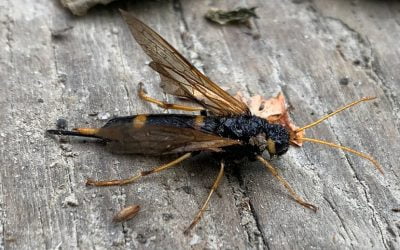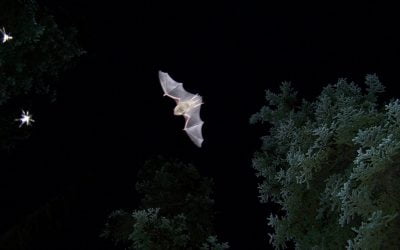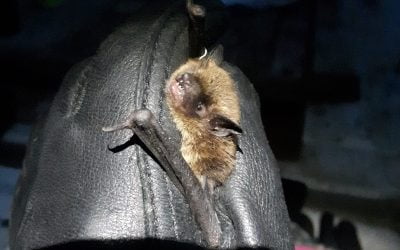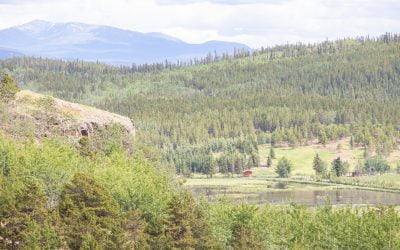It’s tough out there in the arctic. It’s a real fox-eat-fox world. Literally! Take a virtual trip up to the Yukon’s arctic coast and learn about the complex and, at times, tenuous co-existence of two northern icons: the red and arctic fox.
Joelle Ingram Articles
The Dangerous and the Benign: distinguishing between big scary bugs
Some participants of the 2020 Bioblitz got a bit of a scare when they discovered a large insect with what appeared to be a massive stinger. Since Asian giant hornets aka “murder hornets” had recently made headlines with their unwelcome appearance on the west coast of North America, it was reasonable to worry that they may have traveled north to our territory. But we are here to squash that fear! The big scary bug you may be spotting in your backyard is neither murderous nor a hornet. It also doesn’t actually have a stinger! Learn about the harmless wood-loving horntail and how it couldn’t be more different than the dangerous hornet it was mistaken for.
Bear Poo and You: learning about Yukon Bears with the OURS research project
People say there’s more than one way to skin a cat but there’s also more than one way to survey a bear. One of those ways is through their scat! Operation Ursus Research using Scat is doing exactly this and you can be a part of it. Learn how these surveys are conducted, why they’re important, and how you can help improve our knowledge of Yukon bears by collecting their poo.
Rusty Blackbird: the mysterious decline of a common boreal bird
The aptly named Rusty Blackbird is regular fixture in the boreal forest and can often be spotted in wetlands and hanging out by slow moving streams. Until recently, very little was known about this opportunistic water-loving bird but as we learn more about them, we’ve also learned that their populations are in decline. What’s causing this drop in Rusty Blackbird numbers? We’re not entirely sure. Read on to learn how scientists are using modern
technology and recent discoveries to help unravel this mystery. Written by Pam Sinclair in conjunction with Joelle Ingram
Welcome to the Neighbourhood!
Many Yukoners opt to live out of town to take full advantage of the space and solitude the territory has to offer. However, there are some perks to urban living: shorter commutes, general ease of access, and all the bugs you can eat! That last one might only appeal to one of the tiniest urban enthusiast: the endanger little brown bat.
Bat Talk: How do you listen to what you can’t hear?
Nights in the Yukon wilderness have a complex wildlife chorus. If you’re fortunate, you can hear the hoot of an owl, the howls of coyotes, the high frequency ultrasonic buzz of bats. Okay, you might not actually hear that last one. This article will show you we can use technology to pick up on bat sounds that our ears can’t catch.
A Beginner’s Guide to iNaturalist:
Got a case of the isolation blues? Me too. How about we go outside? One of the great advantages of
living in the Yukon is we have a lot of easily accessible green spaces we can enjoy while safely distancing
ourselves from others. But what’s living in those spaces?
The iNaturalist app is essentially a biodiversity encyclopedia that helps you connect with the species in
your own backyard. With the aid of this app you can go out explore, learn new things, and get a little
fresh air while you’re at it.
1 Mosquito, 2 Mosquito . . .
The Yukon is home to a wonderful array of biodiversity! During every season, the territory plays host to a dazzling range of wildlife both large and small from rare migratory birds to our hearty full-time megafauna. One group of creatures that really helps highlight the diversity that can be found in our territory is… the mosquito! I bet you didn’t see that coming.
Free Protein and Sexual Success
10 minute Read - Free Protein and Sexual Success : the benefits of infanticide and cannibalism for northern squirrel populations If you’ve spent some time in the Yukon, you’re familiar with the seasonal challenges the territory can throw your way: the wildly varying...









